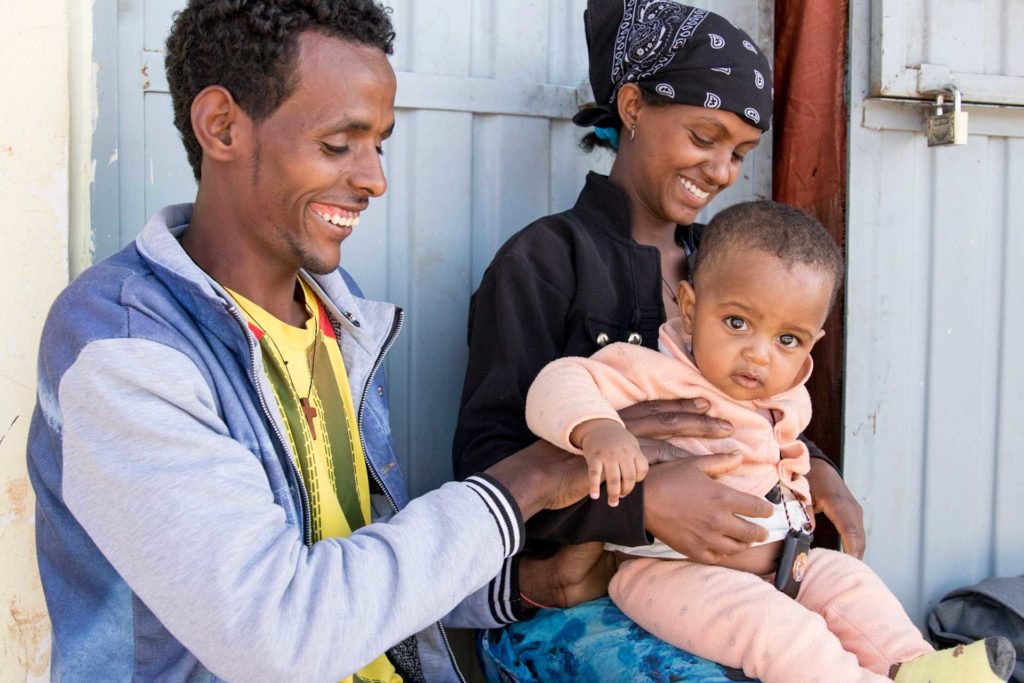Responding to the challenge of lowering maternal and infant mortality, and in an effort to support and train global midwives, a coalition of national and international partners proposed, designed, and implemented the 50,000 Happy Birthdays project in Ethiopia, Rwanda and Tanzania.
The project ran from 2018 to 2020, and aimed to train, equip, and support Midwives’ Associations (MAs), midwives, and other health care providers to enable more Happy Birthdays in the three participating countries.
Project Goals
- Strengthen pre-service teaching and learning in educational institutions to enable institutionalization of the Helping Mothers Survive (HMS) and Helping Babies Survive (HBS) modules
- Support the in-service continuing professional development programs in health facilities to implement the HMS and HBS modules
- Improve specific health outcomes for women and babies
- Build the capacity of the Midwives’ Associations
Investing in maternal health has an impact that goes beyond improving health outcomes for women
Women are the primary care providers for infants and make a significant contribution to wage earning and financial security for their family. If a woman dies in childbirth, her family can struggle to take on the additional financial burden and children are less likely to finish primary school education and are more likely to die before the age of 5. Increasing the capacity of care providers to save lives during childbirth can influence whole communities to avoid the poverty trap (UNFPA, 2012).
The Millennium Development Goals (2000 – 2015) and other global initiatives have resulted in a considerable decrease in maternal and newborn deaths over recent years (Nove et al, 2018). Programs to strengthen the midwifery workforce have accelerated progress towards achieving the United Nations Sustainable Development Goals 2015 – 2030 (UNDP, 2020) yielding a 16x return on investment (UNFPA et al, 2014). Universal coverage of midwife-delivered interventions would avert 67% of maternal deaths, 64% of neonatal deaths, and 65% of stillbirths, allowing 4.3million lives to be saved annually by 2035 (Nove et al, 2020)
Most maternal and newborn deaths occur during and in the 24hours immediately following the time of birth. Training for healthcare providers to provide effective Emergency Obstetric and Newborn Care (EmONC) has been globally agreed as a valid solution to increase providers competence and confidence which can save lives (WHO et al, 2009)
Research has shown that short, repeated, simulation-based training, conducted in health facilities is an effective way to deliver EmONC training (Ersdal et al, 2017). Innovative training methods; Helping Mothers Survive and Helping Babies Survive (HMS/HBS) educational programs for midwives and other healthcare providers, have been pivotal in achieving positive health outcomes for women and newborns.

This is Baby Ermias. He was born in 2017 in Addis Ababa, after a very long labour, and he was not breathing. Midwife Yenealem had been trained in the Helping Babies Survive programs, through the Survive & Thrive Alliance. She knew how to help Ermias breathe. She saved his life.
A well-trained and supported midwife can make the difference between life and death
It is estimated that midwives, educated to international standards, working in an enabling environment, can provide 87% of essential care for women and newborns. An evidence-based framework to ensure effective health coverage (UNFPA, ICM, WHO, 2014) identifies that improving the quality of midwifery services has the biggest impact and can prevent two thirds of women’s and newborns’ deaths globally.